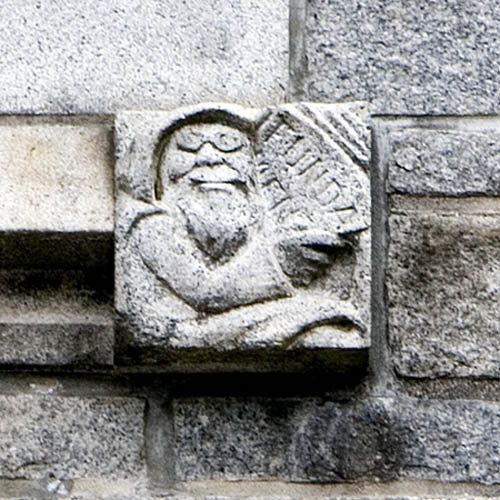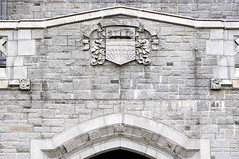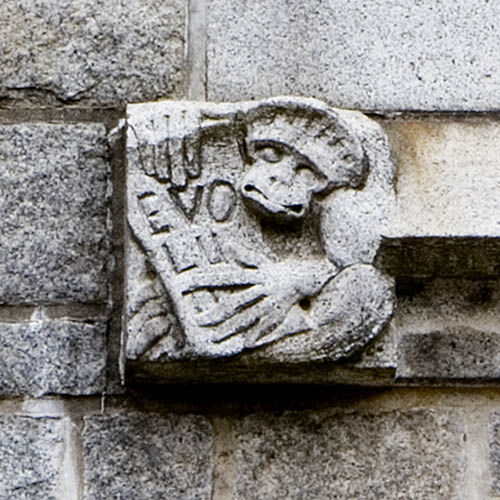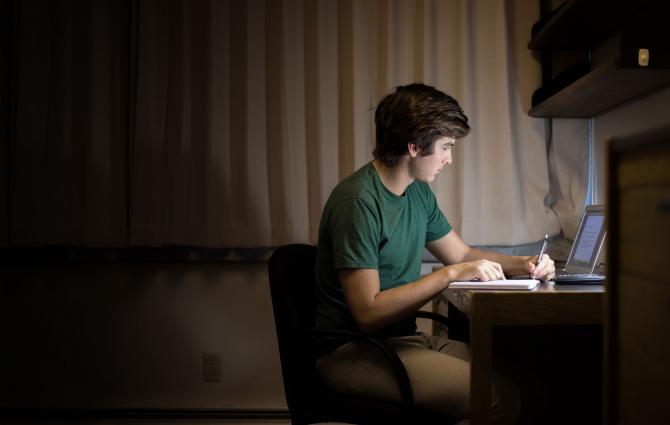Figuring out what I believed in and why was one of the most gratifying parts of my education.
The way we look at history makes it seem like every era has a defining cause, from women's suffrage in the 1910s to civil rights in the 1960s. These are struggles that continue today, and exist outside the decades they’re most closely associated with, but I sometimes wonder what movement our generation will be defined by.
Whatever the movement ends up being, chances are you’ll notice it on campus. Universities have long been hotspots for new ways of thinking and changing ideas about society.
For example, mass student demonstrations protesting university investment and involvement with the apartheid regime in South Africa were held on dozens of campuses around the world in the 1980s. These demonstrations encouraged universities to divest in the regime, and the resulting economic impact was one of many reasons apartheid ended.
In this post, I’m looking at some features of our UBC campus today that highlight the importance of standing up for what you believe in. Though these examples often involve public demonstrations, there are effective ways you can be an activist without leaving your home as well!
Monkey and the Bearded Man by Charles Marega
These small sculptures, located over the main entrance of the Irving K. Barber Learning Centre, depict a monkey holding a scroll that says evolut (as in “evolution”) and a bearded man with a tablet that says funda (as in “fundamentalism”). These figures represent the infamous “monkey” (or Scopes) trial of 1925 in Tennessee.



The trial was part of a larger conflict between Modernists, who believed the theory of evolution could be taught in schools alongside religion, and Fundamentalists, who believed that the theory defied religious texts.
The “monkey” trial put schoolteacher John Scopes on the stand for teaching evolution in school, which went against Tennessee’s laws at the time. Though Scopes was found guilty, the case brought national attention to the conflict and paved the way for the acceptance of evolution and modern science in schools.
Monkey and the Bearded Man shows how a few committed activists can make a huge difference—they might be the reason you learned about Darwin’s finches in high school biology!
The Great Trek Cairn
This monument commemorates activism from students in the years following World War I that helped UBC as we know it come into being.
UBC actually originated as a satellite campus of McGill University in 1906. After the BC government passed the University Act in 1908, planning began for an independent University of British Columbia, which finally opened in 1915 on the site of the Vancouver General Hospital. However, World War I disrupted the construction of a permanent campus in Point Grey, and it remained unbuilt into the 1920s.
In 1922, a group of 1200 UBC students marched through the streets of Vancouver, collecting over 50,000 signatures demanding that the BC government continue the construction of the new university. The students marched all the way up to the Point Grey campus (the “Great Trek”), where they sat on the uncompleted Chemistry Building.

The government acquiesced and the first classes were held on the Point Grey campus in 1925. Any time you think that raising your voice won’t make a difference—it just might! That’s the reason this university was built in the first place.
The Centre for Interactive Research on Sustainability
Yes, this is a building and not a piece of “art” in the traditional sense. However, CIRS represents what I think might be one of the definitive movements of our generation (I have a feeling we’ll have a few).
CIRS was designed as a “living laboratory” for sustainable innovations. It actually has a net-positive energy performance, meaning that it produces more energy than it consumes! The building is even water self-sufficient, collecting rainwater and treating waste within the building.


UBC ranks third in the world for taking urgent action to combat climate change and its impacts, and CIRS is just one amazing example of the great work students, staff, and faculty are doing here. We’re lucky to attend a university that cares about the environment and the climate crisis, and constructs buildings with these issues in mind. Unfortunately, this isn’t the case everywhere, and a lot of work still needs to be done to encourage further action.
As Monkey and the Bearded Man shows, people had to work hard for evolution to be accepted in classrooms, and we may have to work even harder on the issues we face today. It can be difficult to change someone’s mind, but as past activists have shown, we can make positive change that affects future generations.
Activism wherever you are
Demonstrations and protests are great, but there are times when organizing public events isn’t feasible. That’s okay! You can make a difference at home.
Try calling or emailing your local representatives, like your MP, your MLA, and municipal politicians about what change you’d like to see.
You may have heard the term “slacktivism” to describe actions like passively liking or sharing tweets and memes on social media without doing much else. However, social media can be a good way to have conversations with people who may disagree with you or not be as knowledgeable about a subject—just stay polite and make your case well.
Lastly, being educated about subjects you’re passionate about is important—if you have some time at home, do research and keep up to date on what’s already being done so you’re better equipped to have discussions with people and politicians!
Find your cause
Whatever your cause is, university is a great time to learn more about it and why it’s important to you. The climate crisis is something I’m passionate about, but you don’t have to pick just one issue.
Find your movement, and you may be part of the next group of students to bring about major change in the world.
Header photo credit: UBC Archives (UBC 156.1/149)



